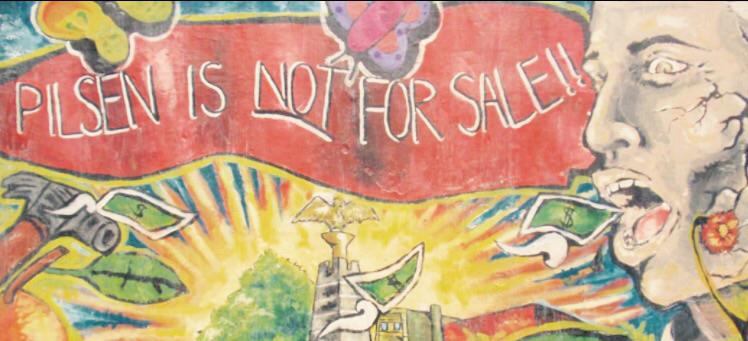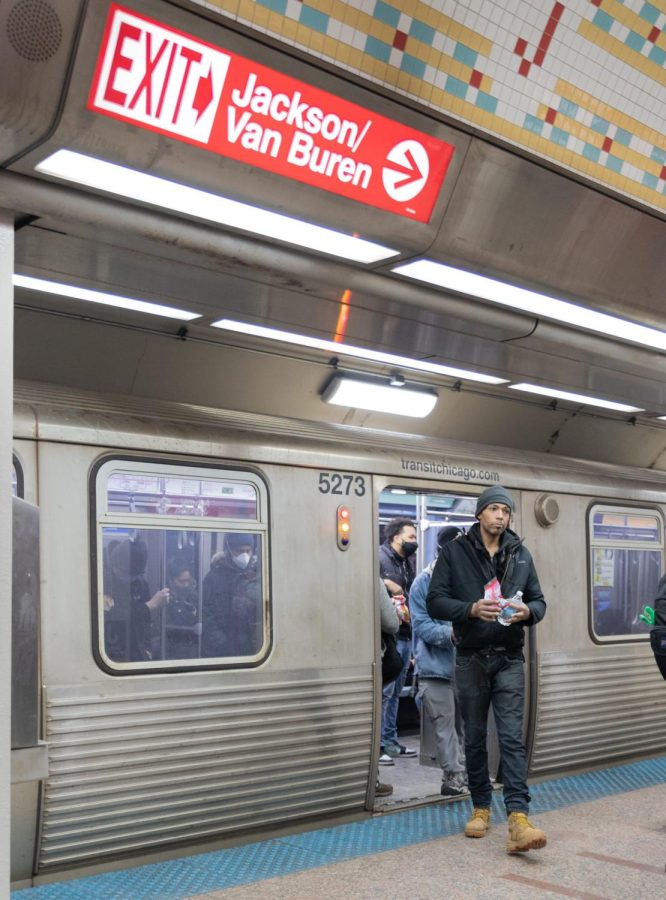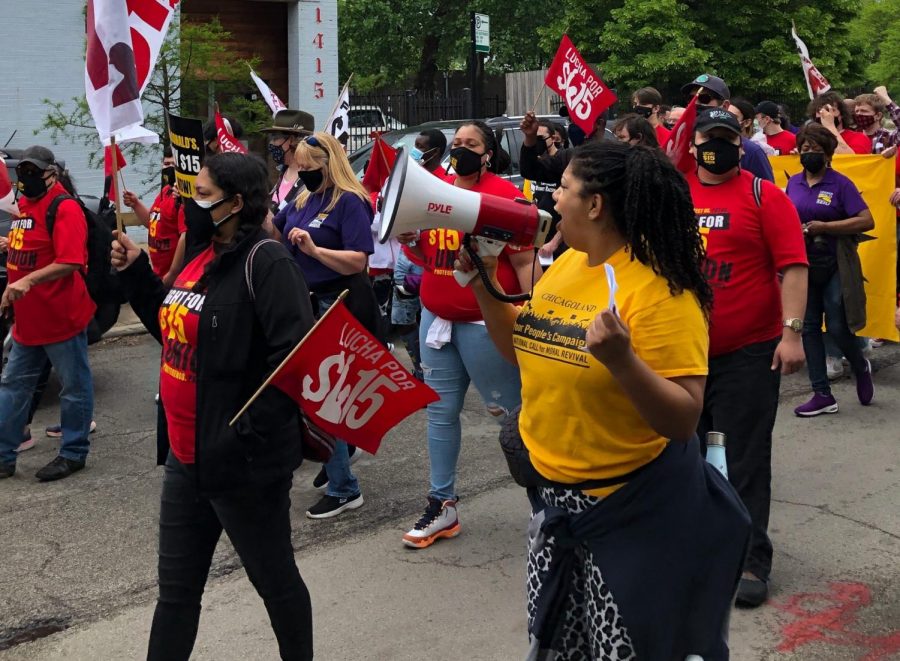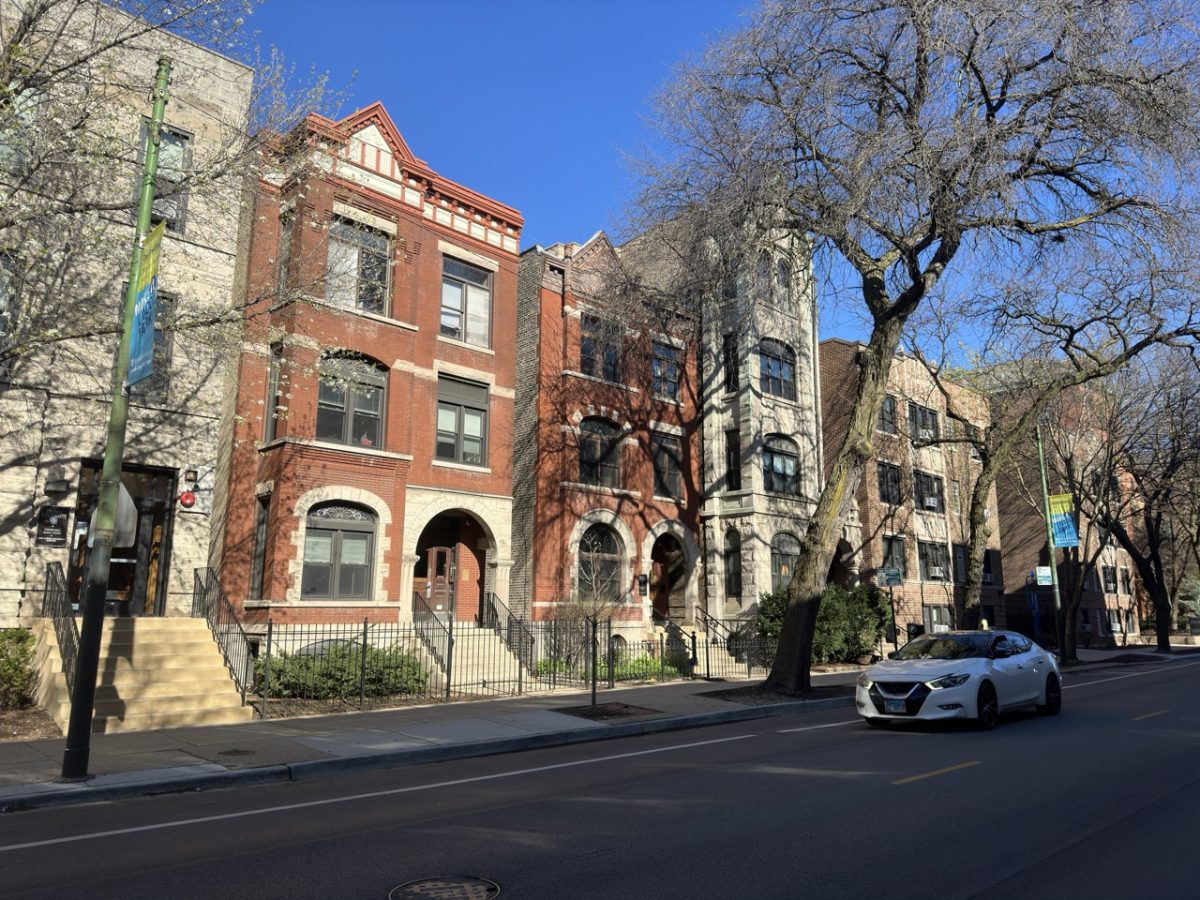[slideshow_deploy id=’11998′]
On a cold and gloomy morning earlier this year, Chicagoans protested the gentrification of the Pilsen neighborhood. Signs were taped to the front of the hip new coffee shop Bow Truss Coffee saying “racism & classism smells like your coffee” and “Sabes donde estas? ¡LA RAZA VIVE AQUI! GENTRIFICATION is NOT Welcome here!”
Pilsen is a predominantly Mexican neighborhood on Chicago’s Southwest Side, covering the area from the Chicago River north to 16th Street, and the Chicago River west to Damen Avenue. This neighborhood is the recent target of new building construction and refurbished service industries. Members of the surrounding community are not taking the changes well.
Erica Castillo, a student at DePaul who was born and raised in Pilsen, has noticed the growing changes.
“There was really never a coffee shop there until the changes took place. I find that funny. Now every block there is coffee,” Castillo said. ”There used to be this little store by my house. I used to go there all the time to buy candy or food. Now it is gone and the family who owned it doesn’t live in Chicago. Now it is owned by Caucasians selling coffee and herbs.”
Since 1997, when the Pilsen TIF (tax increment financing) was approved by the Daley administration, rental and property taxes increased, making it less and less affordable for the Mexican community. With the community being pushed out, Mexican restaurants, coffee shops and stores are losing business as their customers relocate.
“Our restaurant (Cuernavaca Restaurant) was closed down nearly two years ago. The taxes skyrocketed and we couldn’t afford it anymore,” Carmen Gutierrez said. She was one of the co-owners of the restaurant that was located on W. 18th Street and closed in 2013. “It was a family-owned restaurant and we knew all of our customers.” Gutierrez’s restaurant was replaced by a Subway.
According to the 2010 Census, within the past decade more than 10,000 Mexicans have left Pilsen, while in the past two decades the number of white residents has increased by nearly 900 percent.
Pilsen is known for its vivid street vibe and is celebrated for its street art, specifically the colorful murals all over the sides of buildings. Located on 18th street and South Bishop Avenue is an anti-gentrification mural depicting a Mexican family being protected by an eagle. On the right side a man holds a poster reading “alto al desplazamiento en Pilsen,” or stop gentrification in Pilsen.
While some say the murals contribute to the problem of gentrification in having people believe it’s an art community, others disagree. Hector Duarte, a muralist and community member of Pilsen, said this form of art is a vital part of Mexican culture.
“Painting murals is a way for us to denounce what is happening,” Duarte said. “When this mural was painted on South Bishop, there was a fight against the Pilsen TIF, a redevelopment project. The images in this mural serve to inform and bring awareness to the opposition of gentrification. Our community does not want the new constructions, the increasing rent or to have to pay $4 for a cup of coffee.”
The price for a cup of coffee is not the only thing becoming more expensive. The demographics of the neighborhood are quickly changing as increasing rent and higher taxes are driving out community members. With the pink line at 18th Street running directly through Pilsen, it’s convenience to the city’s center makes it appealing.
Castillo also said many family friends have had to leave due to increased rent.
“Before Pilsen was a Mexican community, a lot of the stores around Pilsen were little family business and the rent was not too bad. The family businesses are now gone and there are bars for college students,” Castillo said.
According to the Chicago Tribune, white students are renting many of those apartments.
“A 650 square foot loft is being rented for over $1,200 a month. No one I know can afford that. It is sad to think that I might have to move soon, especially when I don’t know where my family and I would go,” Andres Perez, a Mexican immigrant who has been living in Pilsen for 34 years, said.
Pilsen was named a hotspot for gang violence in 2002 by the Justice Information Authority, but Castillo, as well as many other Pilsen residents, never viewed gangs as a threat.
“Sure, like every place in this world there were problems. There were gangs, but I never had any problems with that. I would just see them,” Castillo said.
Perez compares the future of Pilsen to Humboldt Park and Logan Square, both of which have experienced gentrification in recent years. His neighbors who once lived above him, an older Mexican couple he says, left due to increased rent and a young white couple moved in immediately.
Pilsen has always been a neighborhood for the working-class where un-skilled laborers had jobs and affordable living.
“Pilsen was supposed to be a neighborhood for the Mexican community, but now that it is becoming a ‘better place’ and more expensive,” Castillo said. “The Mexican community is being forced to leave.”
For much of the Pilsen community, gentrification extends past increased rent and coffee shops. This is a matter of pride of place, identity and ownership.















Rachel Carrillo • Oct 27, 2020 at 2:46 pm
I really enjoyed this article because it was every entertaining to the read (me).
Daniel Galvan • Oct 27, 2020 at 2:36 pm
I love reading these articles!
joanna Garcia • Oct 26, 2020 at 10:41 pm
I actually enjoy reading these articles.
Mia Cervantes • Oct 26, 2020 at 4:10 pm
I love these articles but would love to read them more if you also try getting both of the viewers mind so we knows what there ideas/ opinions are about each and one another.